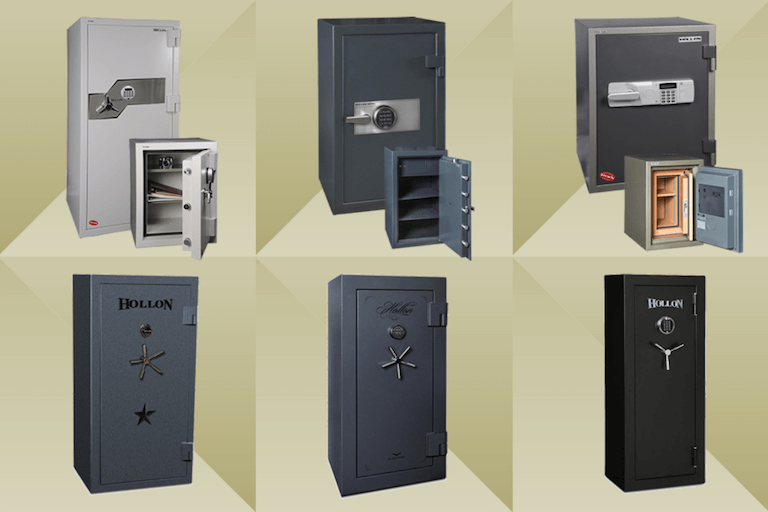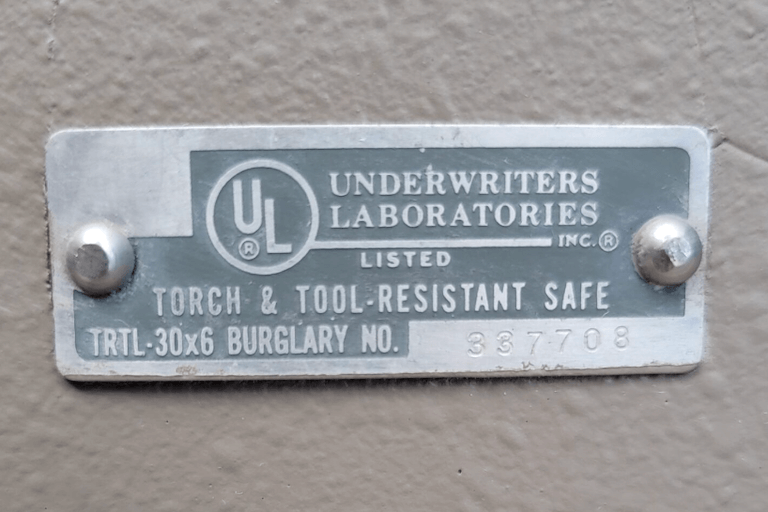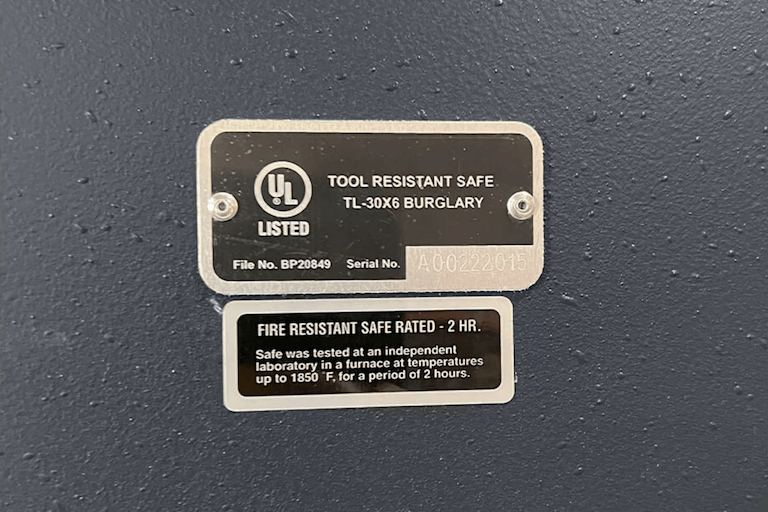
Buying a Safe: How to Choose the Right Safe for You
When it comes to protecting your valuable possessions and important documents, investing in a safe is a wise decision. However, buying a safe is not a simple task. There are various factors to consider, from the type of safe to its size, security features, fire rating, and more.
In this comprehensive guide, we will walk you through the process of buying a safe, providing you with the knowledge and insights you need to make an informed decision.
Understanding the Different Types of Safes
Safes come in different types, each designed for specific purposes. Understanding the different types of safes will help you choose the one that suits your needs.
Home Safes
Home safes are designed for residential use and offer protection for valuable items such as jewelry, cash, important documents, and more. They come in various sizes and can be bolted to the floor or wall for added security, but theyoffer limited fire protection.
Fire Resistant Safes
Fire resistant safes are designed to protect your valuable items from fire damage. They are constructed with fire-resistant materials and can withstand high temperatures for a specified period but they are typically not the best for burglary resistance.
Fireproof safes are available in different Fire Ratings, such as 30 minutes or 60 minutes, indicating the duration they can maintain an internal temperature below a given amount.
The temperature a safe can maintain internally during a fire is important because different items have different combustion points. For example, paper will char at around 387°F (197°C) and can ignite at a temperature of 451°F (233°C), and digital media can be damaged at temperatures above 125°F (52°C). Thus, it's important to consider what you will be storing.
Related: How to Keep Cash Safe at Home Without the Risk
Burglary Safes
Burglary safes are high security safes that feature enhanced construction materials and features to offer higher resistance against break-in attempts. Like Fire Ratings, they feature Burglary Ratings that are based on minimum construction requirements and physical tests that a safe must pass in order to achieve a specified rating.
These types of safe are most commonly used in businesses and commercial establishments but they can be utilized by anyone that requires enhanced protection for their valuables. They are often used to store cash, important documents, and other valuable assets. Commercial safes come in different sizes and offer enhanced security features to protect against theft and burglary.
Gun Safes
Gun safes are specifically designed to store firearms securely. They come in different sizes to accommodate various types of firearms, from handguns to rifles. Gun safes provide protection from theft, unauthorized access, and also typically offer fire resistance.
Evaluating Size, Capacity, and Weight
When choosing a safe, it's essential to consider the size, capacity, and weight of the safe. These factors will determine how much space you have, how many items you can store, and the ease of installation.
Size
The size of the safe should be determined by the items you wish to store as well as the intended location of the safe.
It's advisable to opt for a slightly larger safe to account for any future additions to your valuable collection.
Capacity
The capacity of a safe refers to its internal volume. The internal dimensions of a safe can vary significantly from the external dimensions when accounting for the thickness of the walls and doors.
Consider the dimensions of the items you will be storing and the volume they will occupy, and choose a safe that provides enough internal space to accommodate them comfortably.
Remember, it's better to have a safe with extra space than to struggle with limited storage.
Weight
The weight of the safe is an important consideration, especially if you plan to install it on an upper floor or in a specific location.
Heavier safes offer greater security and are more difficult for burglars to move, but they can be challenging to transport and install.
Consider the structural integrity of your home or office and ensure it can support the weight of the safe.
Prioritizing Security Features
A safe's security features are crucial in ensuring the protection of your valuable items. Here are some key security features to consider:
Construction Materials
Home safes are typically constructed from steel, which can vary in thickness (guage) and quality. Thicker steel provides better protection against theft and fire.
Some safes use composite materials, such as steel with a concrete composite, for enhanced security. Fire-resistant insulation, like ceramic wool or gypsum board, is often used in safes designed to protect contents from fire.
When choosing a safe, it's important to consider the specific threats you want to protect against and select a safe with construction materials that provide the level of protection needed.
Locking Mechanism
The locking mechanism of a safe determines how it can be accessed. There are several types of locking mechanisms, including:
- Mechanical dial locks: These locks require a combination to open the safe. They are reliable and do not require batteries, but changing the combination may require professional assistance.
- Electronic locks: Electronic locks use a keypad or digital interface to enter a PIN code. They offer convenience and can be easily reprogrammed, but they rely on batteries for operation.
- Key locks: Key locks on home safes provide a traditional yet reliable security option, but of course, keys can be misplaced or fall into the wrong hands.
- Biometric locks: Biometric locks use fingerprint recognition or other biometric data for access. They offer high-security levels but can be more expensive.
Choose a locking mechanism that suits your needs and provides the desired level of convenience and security.
Understanding Safe Ratings
Many safes are tested for burglary and fire resistance, either by the manufacturers or third party rating agencies. Obviously the latter is better. Get familiar with both burglary and fire ratings so you fully understand the level of protection you are buying. Don't just take a manufacturer's word for it.
Burglary Ratings
The burglary rating indicates the level of security a safe provides against break-ins and theft. Different rating systems exist, such as B-Rate, C-Rate, UL RSC, UL TL-15, UL TL-30, and more. Higher-rated safes offer better protection against unauthorized access.
Fire Ratings
In addition to security against burglary, consider a safe's fire rating, especially if you plan to store important documents or items that are susceptible to heat damage. Here are some key points to understand about fire ratings:
- Fire ratings indicate the duration a safe can withstand a fire without the internal temperature rising above a certain threshold.
- Fire ratings start from 30 minutes, which means the safe can protect its contents from fire for at least 30 minutes.
- Higher fire ratings, such as 60 minutes or 120 minutes, provide increased protection for sensitive items.
- Look for safes with fire-resistant materials and seals to prevent smoke, heat, and water damage during a fire.
Water Resistance and Environmental Considerations
Water resistance is an often overlooked feature when buying a safe. However, it is important, especially in situations where a fire is extinguished with water or in areas prone to flooding.
Consider the following:
- Look for safes with seals and gaskets to protect against water intrusion.
- Consider the safe's location and potential exposure to water or moisture.
- Choose a safe with water resistance if you live in an area with a high risk of flooding or if water damage is a concern.
Placement and Installation
Proper placement and installation of a safe are crucial to maximize its security and accessibility.
Consider the following factors:
- Choose a location that balances accessibility and concealment. Avoid placing the safe in high traffic or easily accessible areas.
- Ensure the safe is installed and anchored to a solid and stable surface, such as a concrete floor or wall.
- Follow the manufacturer's instructions for proper anchoring and installation to prevent unauthorized removal of the safe.
Budget Considerations
Safes come in a wide range of prices, depending on their size, features, and security ratings. Determine your budget and prioritize the features that are most important to you.
Remember, investing in a high-quality safe is a long-term investment in the protection of your valuable possessions and, in many cases, your precious memories.
With this in mind, we don't suggest you cheap out on your purchase. Buying a cheap option will only lead to you getting rid of the safe if it doesn't fail on you first. If a safe isn't up to the task of sufficiently protecting against theft or fire, then it's essential worthless.
Researching and Comparing Brands
Before buying a safe, research and compare different safe brands. Look for reputable manufacturers with a track record of producing high-quality safes. Here at Guardian Safe and Vault, we only sell the products of trusted brands in the industry.
Read customer reviews and testimonials to gauge the reliability and performance of different brands. Consider factors such as warranty, customer support, and after-sales service when evaluating brands.
Seek Professional Advice
If you're unsure about which safe to choose or need guidance specific to your requirements, it's always a good idea to seek professional advice. Consult with one of our safe specialists or a security professional who can assess your needs and recommend the best safe for your specific situation.
In Summary
Buying a safe requires careful consideration of various factors, including the type of safe, what you will be storing, size, security features, fire rating, water resistance, and more.
By understanding your needs and prioritizing the right features, you can choose a safe that provides optimal protection for your valuable possessions.
Remember to research different brands, seek professional advice if needed, and invest in a high-quality safe that meets your budget and security requirements. With the right safe, you can have peace of mind knowing that your valuables are secure.



